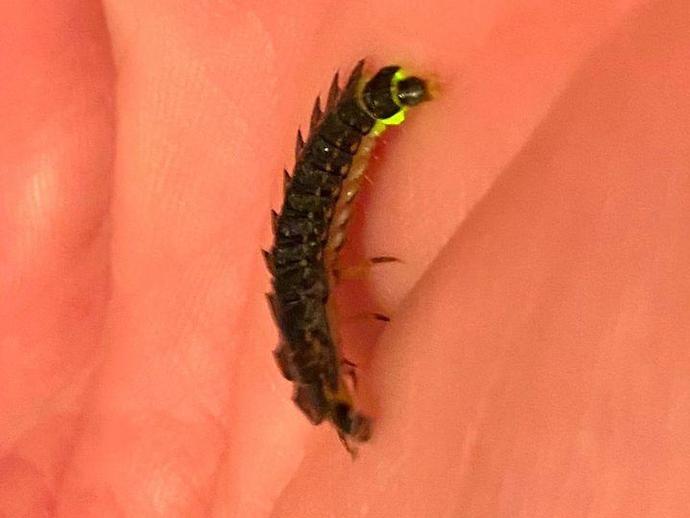December 27, 2021
We're reaching into the archives for today's #BenInNature update presented by our friends at Carter Bank & Trust! The following post was originally published on October 14, 2020.
We're all familiar with adult lightning bugs, but have you ever seen a larval lightning bug? According to VMNH Collections Assistant Dr. Jackson Means, this firefly larva likely belongs to the genus Photuris, also known as the "femme fatale" lightning bugs. This is because the adult females imitate the light signals of other species' females in order to lure in unrelated males and eat them!
Adult fireflies are active during the summer, and as summer winds to a close, the females lay eggs in leaf litter. The eggs hatch just a few weeks later and the wingless larvae begin crawling through the leaf litter hunting other small invertebrates. In late fall, these larvae burrow into the soil or hide under bark to overwinter, then emerge in the spring to continue feeding. After a few weeks, they return to the soil to pupate, and then re-emerge in early to mid-summer as adult fireflies.
While adult fireflies flash the bioluminescent lights on the tips of their abdomens to communicate to potential mates, larval fireflies are a bit different. Also known as "glowworms" in many parts of the world, these little guys generally emit a continuous dull glow from the tips of their abdomens. They aren't nearly as bright as the adults, but if you keep an eye peeled on a dark fall night, you might just spot one crawling along!
ABOUT #BenInNature
Social distancing can be difficult, but it presents a great opportunity to become reacquainted with nature. In this series of posts, Administrator of Science Ben Williams ventures outdoors to record a snapshot of the unique sights that can be found in the natural world. New updates are posted Monday - Friday, with previous posts highlighted on the weekends. This series of posts is made possible thanks to the support of VMNH Corporate Partner Carter Bank & Trust (www.cbtcares.com).
NATURE PHOTO IDENTIFICATIONS
If you discover something in nature that you would like help identifying, be sure to message us right here on Facebook with a picture (please include location and date of picture) and we'll have our experts help you identify it!

 Hours & Admissions
Hours & Admissions Directions
Directions

